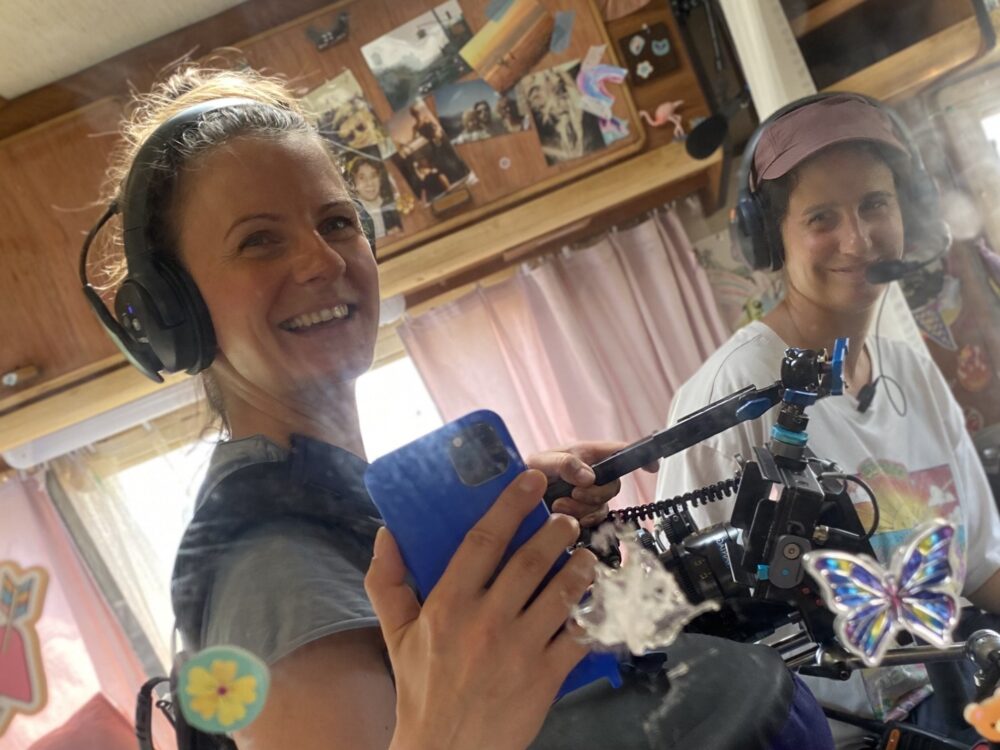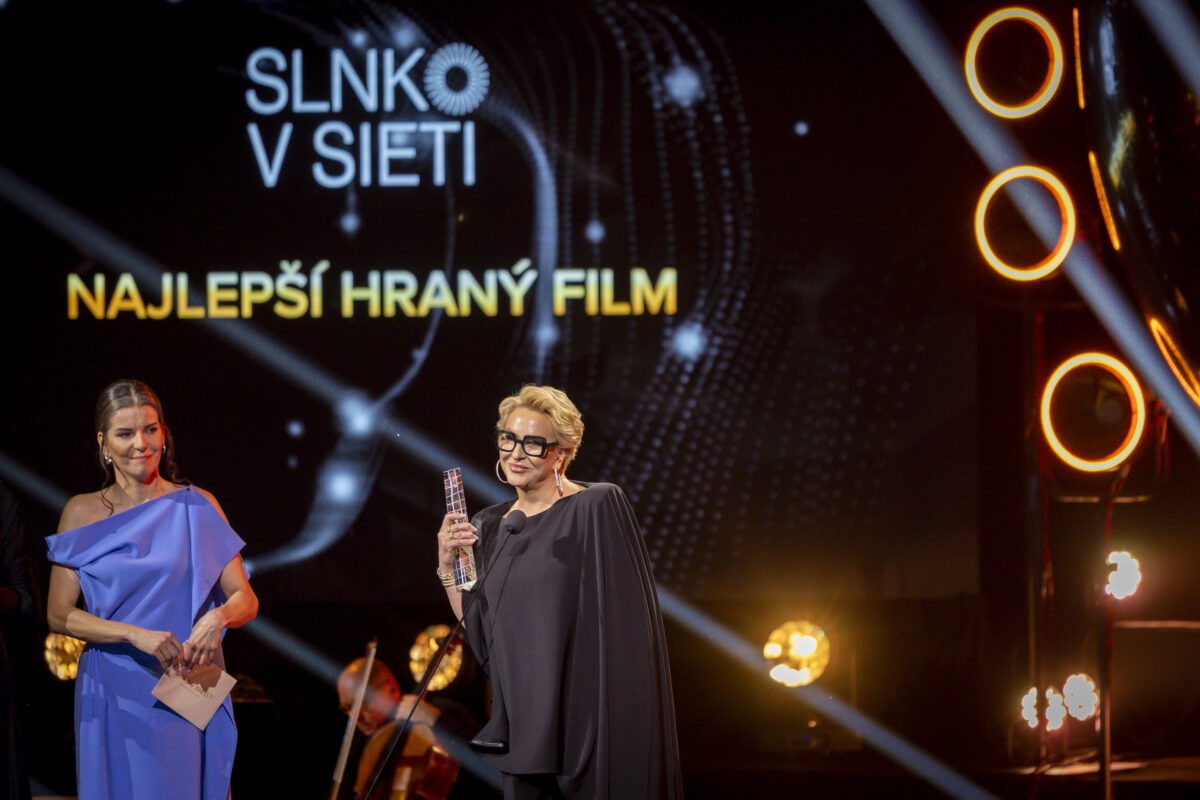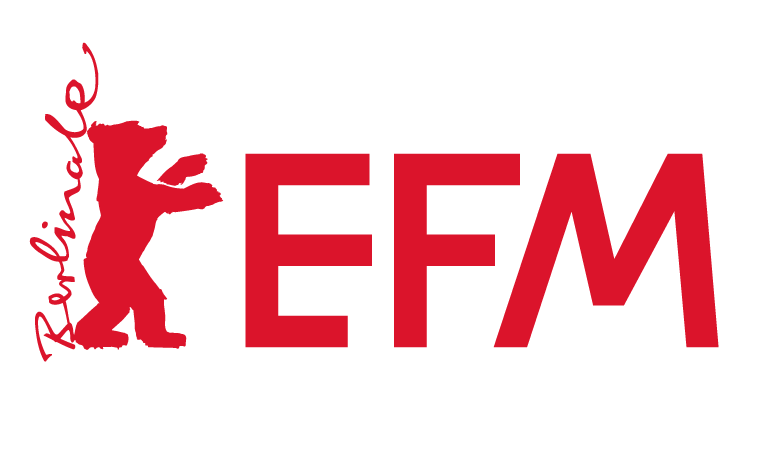The feature film Karavan explores timeless themes of freedom, love, and the courage to choose one’s own happiness through the story of a mother, Ester, and her mentally disabled son, David. The Slovak-Czech-Italian co-production, directed by Zuzana Kirchnerová, was filmed based on her own script (co-written with Tomáš Bojar and Kristina Majová), which draws from her personal life experience as a mother of a son with Down syndrome and autism. Ahead of its world premiere at the Cannes Film Festival, where this poetic road movie was included in the Un Certain Regard competition section, we spoke with the film’s two principal cinematographers, Simona Weisslechner and Denisa Buranová, about their approach to filming, communication with the actors, and the challenges of shooting on the road.
How did your collaboration with director and screenwriter Zuzana Kirchnerová unfold, and could you describe the specifics of your and her work? Did all three of you share a common vision from the beginning, or did it evolve over time?
Denisa Buranová: I worked as the cinematographer on the film during the shoot in the Emilia-Romagna region and later passed the project on to Simona Weisslechner, with whom I had collaborated several times before. Since she was already working in that region as a camera operator, she was a natural choice. Our collaboration with the director was organic, and we worked from the initial ideas she brought. As the story is personal for her, we focused on an intimate, bodily, and specific perception of the world from the perspective of the main character, the disabled David. Equally important was the gentle and sensitive depiction of the mother, who, after years of caring for her son, finally goes on a dream vacation by the sea, where she experiences a gradual sense of liberation. During location scouting, we inspired each other and developed our view of both characters—David and his mother.
Simona Weisslechner: I joined the film during the first third of shooting in the Emilia-Romagna region. After Denisa left, I was given the opportunity to take over the project as the lead cinematographer. Before the next stage in Calabria, I had over a month of preparation time with director Zuzana. The visual character of the film was already defined—Denisa’s cinematography was close to my own style, so I could naturally continue from there. Our shared vision with Zuzana continued to evolve as we worked together in detail, for each scene, we defined a color palette, storyboard, and moodboard, which served as a shared visual compass. Our collaboration was built on trust, which we had to establish in a very short time. From the start, we knew we didn’t want a visually flashy film but rather sought truthfulness, simplicity, and emotional presence.
The camera was meant to be an observer—sometimes invisible, other times very close. Zuzana had a clear idea of the atmosphere but also allowed space for responses to the specific circumstances, locations, lighting, or actors’ inner states.
Visually, the film uses detailed shots, soft and natural light, and a color palette that moves in pastel tones. How did this approach develop and what does it express?
Simona Weisslechner: The visual approach was built very sensitively, in close dialogue with Zuzana and her personal experience raising a son with a disability. Caravan is about the desire to escape, the strength to rebel, and the courage to live fully — and these very themes shaped the film’s visual language.
When I took over the project, it was important for me to continue the existing visual poetry and also develop it further in line with the atmosphere of the second phase of shooting. Caravan, in the meantime, had traveled from the north of Italy all the way to the very “tip” of the boot, and along with this physical journey, the rhythm, light, space, and energy of the surrounding environment gradually changed. We tried to perceive these changes and translate them delicately into the film’s visual style.
We deliberately kept the color palette in pastel, muted tones. It expresses the fragility of the situations, the vulnerability of the characters, and a kind of gentle distance—as if looking at the world through a veil. We weren’t aiming for realistic color but for an emotional state hovering between documentary and dream.
Zuzana has an extraordinary sense for color and composition, working intuitively with tones, materials, and light. We closely collaborated with Italian architect Cristina Bartoletti on the visual conception of the spaces – both interiors and exteriors – as she prepared everything in Italy. We exchanged many emails, references, and sketches. Zuzana even furnished the caravan with some of her personal items, contributing to its authenticity and creating a space that naturally extended the character.
Did you have any specific sources of inspiration?
Simona Weisslechner: Our inspiration wasn’t tied to one specific visual model but came intuitively, through the poetics of films that work with space, silence, and incompleteness. Initial references included the films of Alice Rohrwacher and Andrea Arnold, whose approach to reality, magical realism, and physicality of characters was important to the director. Personally, I also drew inspiration from films by Jean-Marc Vallée, Chloé Zhao, Derek Cianfrance, and Sean Baker—filmmakers who can combine intimacy, a sense of place, work with non-professional actors, and strong emotional presence.
What mattered more than a specific style was the feeling—whether the image felt natural, unobtrusive, and meaningful. For the final visual grading, we worked closely with colorist David Koubík at UPP and editor Adam Brothánek.
Denisa Buranová: Among our sources of inspiration were the aforementioned films by Alice Rohrwacher, especially The Wonders, and the attempt to convey the sun-drenched atmosphere of summer. We deliberately contrasted this light mood with dark, immersive scenes reflecting the mother’s inner unrest and insomnia.
Caravan is marked by a closeness that extends into the intimacy of the characters and actors. The camera closely captures their bodies, faces, and gestures, often through various fabrics. How did the communication with the actors unfold?
Simona Weisslechner: The lead role was played by Aňa Geislerová alongside non-actor David Vodstrčil, and she was able to sensitively perceive and react to the environment. This blend of fiction and documentary approach required a camera that was constantly alert, yet unobtrusive. I worked mainly with natural light, handheld camera, and long takes, allowing for organic moments without interference. I filmed with respect and attention to both the space and actors, often simply just observing silently, at other times adapting to the of the characters and the dynamics of the situation. The work with both actors and non-actors was built on trust and natural contact. The camera was physically close, so we all had to build mutual trust to make its presence non-disruptive. I remember one long take in the heat when my sweat was dripping onto Aňa Geislerová. She wasn’t fazed, even during an intense scene. It was deeply professional but also profoundly human.
David Vodstrčil, who played the disabled character David, despite not being a professional actor, has natural talent and strong charisma. His humor, openness, and sporting spirit quickly won over the whole crew, many of whom played football with him during breaks. He was accompanied by a close support circle—his older sister, mother, and child coach Helena Poláková, who ensured his comfort on set. Zuzana, being a mother of a son with Down syndrome, had a close connection with him. For me too, this wasn’t a first experience, I used to be involved with a foundation for children with intellectual disabilities.
The performances feel very natural. How was this authenticity achieved?
Simona Weisslechner: Although the final result may seem spontaneous, many scenes were carefully prepared. David rehearsed movement choreography with his coach, Aňa Geislerová, and Júlia Oľhová, which we would then go over again on set before filming. This preparation wasn’t about control but about enabling us to respond precisely and sensitively to the live space and spontaneous moments.
Intimacy coach Amy Hack was a key support for preparing intimate scenes. She helped especially with scenes between Aňa Geislerová and Mario Russo, which we went through point by point, shot by shot. We agreed in advance on the movements, timing, and camera positions. Everything was prearranged, and this clarity and trust created space for intimacy to unfold naturally, with mutual focus and understanding.
Denisa Buranová: We had a multi-day acting workshop with the main cast. The goal was to deepen their relationships and prepare David for filming in close physical proximity to the camera. David is a miracle—an actor with exceptional focus. A huge asset was the above-mentioned coach, Helena Poláková, who prepared David and watched his wellbeing during the shoot.
You mentioned that filming started in Emilia-Romagna and continued in Calabria, where Simona took over. What technical challenges did you face, whether due to the crew’s moving around or shooting in the tight space of the caravan?
Denisa Buranová: A week before filming in Emilia-Romagna, we were hit by a major flood. We were very lucky that the main villa was undamaged, but the beach was covered in driftwood. We had to reorganize the shooting schedule, but we used the wood creatively to build shelters. Evening shoots were made harder by the number of mosquitoes.
Simona Weisslechner: Since the budget didn’t allow for a low loader (a special low-floor trailer used during filming to carry a vehicle so that actors can “drive” without actually operating it), the biggest challenge for me was filming inside a moving caravan and pickup truck under real driving conditions. Because of the tight space and safety concerns, we had to limit the number of people inside. In the caravan, it was just me, my grip Vojta (who physically supported me), the sound recordist, assistant director, and the actors. Aňa Geislerová actually drove the vehicle, though occasionally the prop master replaced her for some shots, wearing a wig. Zuzana and the rest of the crew — the sound mixer, script supervisor, focus puller, video operator, and others — followed in a support van, where they had a live video feed. I was in constant communication with Zuzana via walkie-talkie. She directed me in real-time, telling me whom to film and where to focus. It was physically demanding and intense work. I’m very grateful to my small Czech camera team, who traveled with us to Calabria and supported me throughout the 28-day shoot.
To stabilize the camera while driving, I used a grip called La Bouée. It translate to lifebuoy, I’d call it more of an inflatable ring. It’s a cushion filled with polystyrene balls that supports the elbows and distributes the camera’s weight. This helped stabilize shots even during movement. I also wore knee pads to be able to kneel and stay low during long takes.
These are truly demanding conditions for a cinematographer. How did you adapt to working in an unfamiliar environment?
Simona Weisslechner: A week before the shoot, I often got up before sunrise to feel the atmosphere of Calabria in its quietest moments. I needed to “tune into” the light, rhythm, and mood of the setting. Many night and evening scenes were shot during the so-called blue hour—the short window after sunset when the light is soft, diffused, and visually magical. It lasts only about 40 minutes, so precise planning and timing were crucial.
In Calabria, the locations changed at the last minute. It was not an ideal situation, but we adapted quickly. Often the entire team, including two local location scouts, producers Dagmar Sedláčková and Jakub Viktorín, and production manager Zuzana Jankovič, drove around the region looking for visually and dramatically suitable locations.
Do you recall any specific locations?
Simona Weisslechner: For instance, we searched multiple times for the panorama for the final scene—we discovered it completely by accident. While driving through the mountains, I felt sick from the altitude change and we had to stop the car. When we got out, a beautiful view opened up. And that’s exactly where we filmed the scene. Another time, while looking for a suitable gas station, locals treated us to a three-course lunch. These unplanned moments were not only heartwarming but often helped us build a personal connection to the space before shooting.
A specific chapter was the reshoot in Moravia, which took place in the fall. After the warmth of Italy, we suddenly faced cold. The actors’ breath was visible during exterior dialogues, which was a visual challenge. We had to find creative solutions to maintain continuity with the scenes shot in Italy.
With the arrival of lighter camera gear, more women are entering cinematography, though it’s still relatively rare to see them in this profession. How do you perceive the position of women behind the camera in Slovak cinema?
Denisa Buranová: I see that the position of women in cinematography is gradually changing, but it’s still important to talk about it. It’s not just about technical skills, but also about a specific sensitivity to working with the body, emotion, and visual rhythm, which women can bring to a team.
Simona Weisslechner: I think technological progress in this area has certainly played a role. In the past, film equipment was much heavier and physically demanding, which may have discouraged women or simply made it harder to access this profession. A major inspiration for me is the cinematographer Autumn Arkapaw, who this year became the first woman to shoot a film on wide-format IMAX 70mm. It shows that women can handle even the most demanding technical challenges when they are given trust and space. We also have great female cinematographers in Slovakia, such as Lucia Zavarčíková, who is also the president of the Slovak Cinematographers Association. And she’s not the only one. I think this is a significant and important shift.
Personally, I am very proud that Karavan not only has a female lead, but also a female cinematography team – and in fact, that most of the key roles in its creation were held by women. I believe that when other women, regardless of age or experience, see this film, it will give them the courage and impulse to realize that their dreams are within reach and they have their place in technical and leadership roles in film production.









